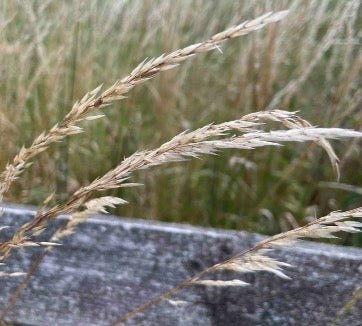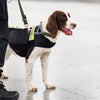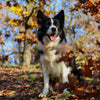Grass Seeds



They may create a pretty and tactile county scene gently waving in the breeze but grass seeds are a nuisance causing a huge number of injuries and infections to dogs each year. They can latch onto your dog’s coat and cause serious irritations and worse if not located and removed.
Grass seeds can settle into your dog’s coat, move into their skin and stay there unnoticed for a long time, causing problems like ulcers and ear infections. They’re also regularly the cause of eye problems and get stuck between pads and toes and even migrate up the leg.
The barbed seed are found in many wild grasses, as well as on barley and rye crops, some have very sharp almost needle like parts. They tend to get stuck in your dog’s fluffiest areas, like their ears, paws, tail or armpits. And they can be inhaled, swallowed and cause painful infections. In the worst cases, they can get forced under your dog’s skin and may move around to different parts of their body causing extremely discomfort and pain.
If your vet suspects your dog has one buried somewhere, they will do thorough investigation work. If grass seeds are not removed quickly, painful abscesses and ulcers can form, along with many other health issues. – even if they can’t see or feel them!
How to spot the effects of Grass Seeds
- Fur – you’ll see no visible infection, but the fur will become matted.
- Eyes – your dog’s eye maybe inflamed, have discharge and excessive tears, you can sometimes see the seed in the inner eyelids.
- Feet – grass seeds often find their way under the skin around the paws. This will cause redness and swelling between the toes creating an almost obsessive pattern of licking.
- Ears – your dog is likely to shake its head a crazy amount, scratch or rub the ears and tilt its head more often.
- Nose – sneezing, pawing at the nose and nasal discharge indicate a grass seed is stuck in this sensitive area/
- Mouth (including gums and tongue) – swelling and inflammation of the tongue, gums or tonsils.
- Lungs – If this is the case, your dog will have shortness of breath and is likely to be vomiting.
How to prevent grass seeds
Check them from nose to tip of tail post walk, groom them if they are fluffy and check their eyes.
Double check the toes, ears and eyes when inspecting your dog, these areas are more susceptible to grass seeds.
Keep paw and if possible, ear and trouser fluff trimmed, This way, you’ll find it easier to see anything that’s latched into their coat and help prevent grass seeds taking hold.
Avoid areas with long grass in the summer, it’s a little bit boring but better to be safe than sorry!
To remove grass seeds
You should remove grass seeds as soon as you spot them – a pair of tweezers or your fingers will do the trick, seeds can be rinsed or irrigated gently from eyes with Ace Canine Hypocillin presented in a fine mist pump spray especially for sensitive areas and a larger 500ml trigger spray option for wounds and larger areas requiring gentle, 100% animal safe to lick, antibacterial attention.

When to seek Veterinary advice
If you can’t see any grass seeds, but your canine friend is showing any of the above signs, or is simply distressed, you need to talk to your vet as soon as you can. If you’re unable to remove a grass seed – like if it’s in the ear canal, or too deep in your dog’s skin – then your vet will have a range of options and tools to assist.
www.ace-canine.com/products/hypocillin-eye-ear-antiseptic-cleaner
-
Posted in
Dog body language, dog itchy skin, Ear infection, Grass seeds, Head shaking, Health, Injured dogs, Sore Paws










